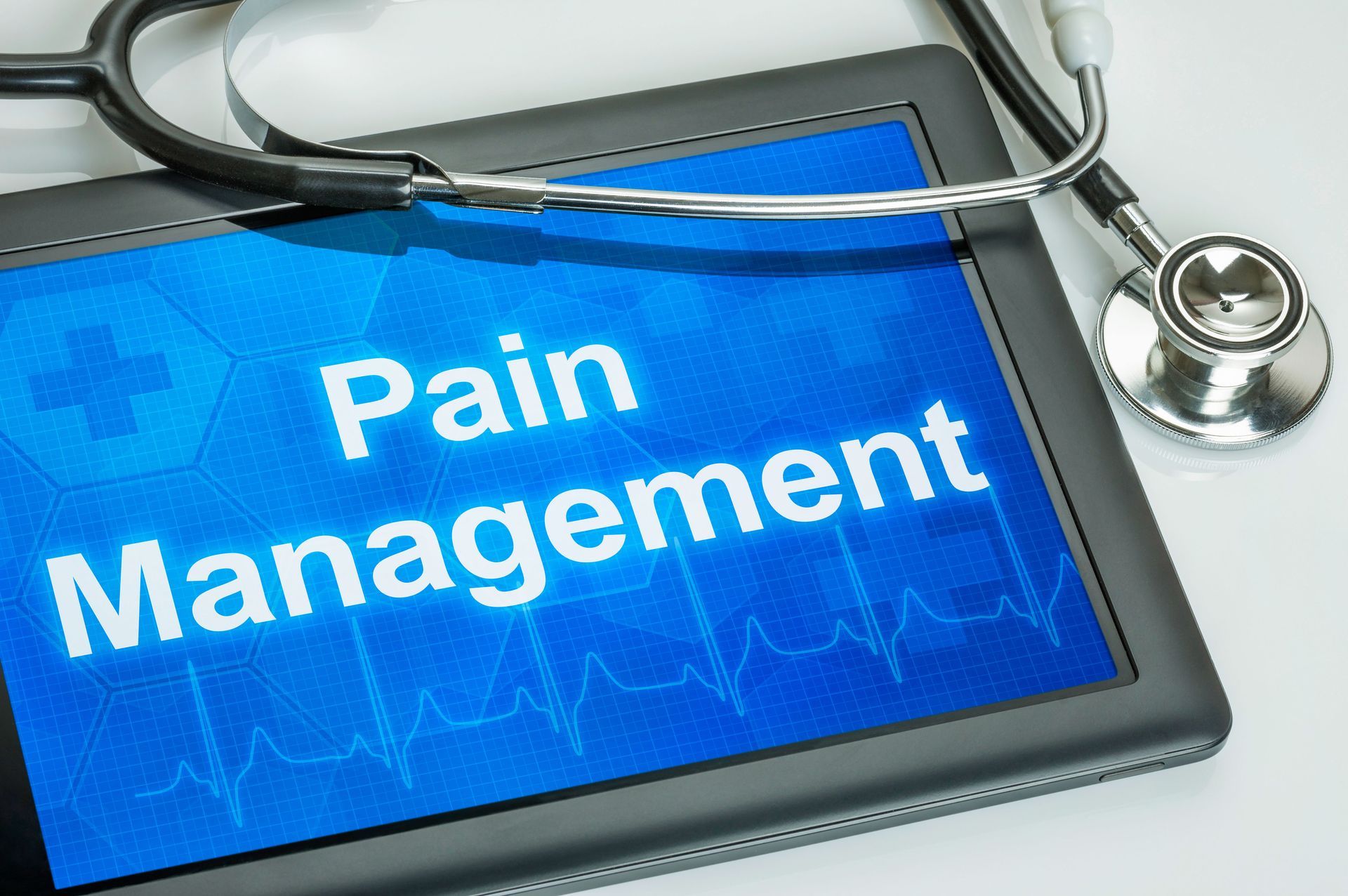Understanding Your Options: Modern Pain Management Strategies
Explore the evolving field of pain management and the various strategies available to alleviate chronic and acute pain conditions. While traditional methods focused primarily on medication, modern approaches prioritize a more comprehensive, individualized treatment plan to enhance quality of life and minimize side effects.
Understanding the Role of Medication
Medication has historically been the cornerstone of pain management, offering quick and accessible relief from symptoms. Non-opioid analgesics, such as NSAIDs and acetaminophen, are commonly prescribed and available over the counter, providing effective pain relief for mild to moderate discomfort without the risks associated with opioids. These medications work by reducing inflammation or interrupting pain signals, making them suitable for conditions like arthritis and muscle sprains.
Opioid medications are potent pain relievers often reserved for severe pain conditions, such as post-surgical recovery or cancer-related pain. While highly effective, opioids come with a significant risk of dependency and side effects, necessitating careful monitoring and strict adherence to prescription guidelines. As awareness of opioid risks has grown, there has been a notable shift toward alternative medications and treatment protocols to minimize misuse.
Adjuvant medications, including certain antidepressants and anticonvulsants, are increasingly used to manage chronic pain. These drugs target different pain pathways and can enhance the effectiveness of standard analgesics. Pharmaceutical advances continue to yield new therapies, such as topical agents and targeted biologics, expanding options for patients seeking relief from specific pain sources.
Utilizing Physical Therapy and Rehabilitation
Physical therapy plays a crucial role in pain management through specialized exercise programs designed to reduce pain and improve function. Personalized exercise plans, tailored by licensed physiotherapists, help patients regain mobility and strength while managing pain with minimal reliance on medications. These programs can significantly benefit conditions such as low back pain, fibromyalgia, and osteoarthritis.
Manual therapy techniques, including joint mobilization and manipulation, are integral components of physical rehabilitation aimed at reducing inflammation and restoring normal function. These hands-on therapies are particularly effective for musculoskeletal conditions where joint and muscle restrictions contribute to pain. Successful manual therapy often requires skilled practitioners and is best used alongside other rehabilitation strategies.
Hydrotherapy and aquatic exercises provide an alternative to traditional physical therapy methods, leveraging the supportive and resistive properties of water. This approach benefits individuals with severe pain or substantial mobility restrictions, allowing exercise without the stress placed on joints in land-based activities. Hydrotherapy is commonly practiced in controlled environments but can extend to personal pools when patients are educated on safe techniques.
Applying Psychological Approaches to Pain Relief
Psychological methods are now recognized as fundamental components of comprehensive pain management, addressing the mental and emotional aspects of chronic pain. Cognitive Behavioral Therapy (CBT) helps patients identify and alter negative thought patterns that exacerbate pain experiences, reducing both perceived pain intensity and associated depression or anxiety.
Mindfulness and meditation practices further support these plans by promoting relaxation and enhancing coping mechanisms. These practices involve focusing on the present moment and cultivating an accepting attitude toward pain sensations, which can diminish their overall impact. Regular mindfulness practice has been linked to reduced physical symptoms in patients suffering from various pain disorders.
Acceptance and Commitment Therapy (ACT) offers another psychological strategy, encouraging patients to embrace their pain without avoidance while focusing on personal values and meaningful activities. ACT provides patients with tools to live fuller lives despite pain, promoting psychological flexibility and improved mental health. Stress management techniques, including biofeedback, supplement these methods by helping patients control physiological stress responses often associated with pain.
Incorporating Integrative and Alternative Therapies
Integrative and alternative therapies are increasingly popular in pain management, recognizing the limitations and side effects of conventional treatments. Acupuncture and acupressure offer holistic approaches by stimulating the body’s self-healing processes through precise needle placement. These practices have been shown to relieve symptoms for conditions like migraines and back pain, often enhancing the effects of other treatments.
Herbal and nutritional supplements provide another avenue for managing pain, often serving as adjuncts to standard therapy. Compounds such as omega-3 fatty acids, glucosamine, and turmeric are known for their anti-inflammatory and pain-relief properties. Patients considering supplements should consult healthcare providers to ensure compatibility with existing treatments and avoid adverse interactions.
Chiropractic care offers another complementary approach, focusing on diagnosing and treating musculoskeletal disorders. Through manual adjustments, chiropractors aim to restore spinal alignment, relieve discomfort, and promote overall well-being. Combining chiropractic care with other therapies, such as massage, can deliver greater synergistic benefits for managing chronic pain.
Advancing Through Technological Innovations
Modern technology is revolutionizing these plans, offering innovative solutions alongside traditional methods. Transcutaneous Electrical Nerve Stimulation (TENS) is a non-invasive technique that uses electrical impulses to interfere with pain signaling. Widely used for conditions like chronic back pain, TENS devices provide temporary relief and can be conveniently used at home under professional guidance.
Neuromodulation devices, including spinal cord stimulators, represent another technological breakthrough, offering long-term pain relief for patients with severe chronic pain unresponsive to conventional therapies. These devices modulate nerve activity by delivering electrical impulses to specific regions of the central nervous system, effectively reducing pain perception. Continued advancements in this field promise increasingly precise and efficient treatments.
Biofeedback mechanisms and wearable pain-monitoring technologies also play pivotal roles in these comprehensive plans. These tools track physiological responses such as heart rate, muscle tension, and skin temperature, providing real-time data that patients can use to regulate their pain more effectively. As innovation progresses, there are expanding possibilities for individualized, tech-assisted treatment strategies.
Developing Personalized Plans
Personalized pain management plans emphasize the importance of tailoring treatments to individual patient profiles, acknowledging the unique nature of pain experiences. According to the American Academy of Orthopedic Surgeons (AAOS), in the United States, there are over 30,000 orthopedic surgeons, many of whom advocate for personalized care to effectively address specific pain conditions. Comprehensive assessment methods help healthcare providers understand each patient’s condition, crafting strategies that meet their unique needs and circumstances.
Multidisciplinary care teams play a vital role in developing and implementing personalized plans, uniting medical professionals from diverse fields, such as physicians, physiotherapists, and mental health experts. This collaborative approach ensures that all aspects contributing to a patient’s pain are addressed, enhancing treatment outcomes and patient satisfaction. Continual collaboration and communication among team members are essential to the success of these multidisciplinary approaches.
Regular reassessment and plan adjustments are key components of personalized plans, allowing timely modifications as patients’ conditions and needs evolve. This dynamic process ensures that treatments remain effective, adapting to new evidence and innovations in the field. Patient education and self-advocacy are equally crucial, empowering individuals to take an active role in managing their pain and improving their overall quality of life through informed decision-making.
The landscape of pain management is rapidly evolving, marked by innovation, collaboration, and personalization. As treatments become more integrated and patient-focused, the emphasis continues to shift from symptom suppression to holistic care that addresses both physical and psychological well-being.
By combining traditional medical therapies with emerging technologies, psychological techniques, and complementary approaches, healthcare providers can offer patients more effective, sustainable solutions. Staying informed about new developments, maintaining open communication with care teams, and participating actively in one’s treatment plan are the keys to achieving long-term relief and an improved quality of life. For pain management care, contact Bensalem Orthopedics, PC to learn more!





Share On: